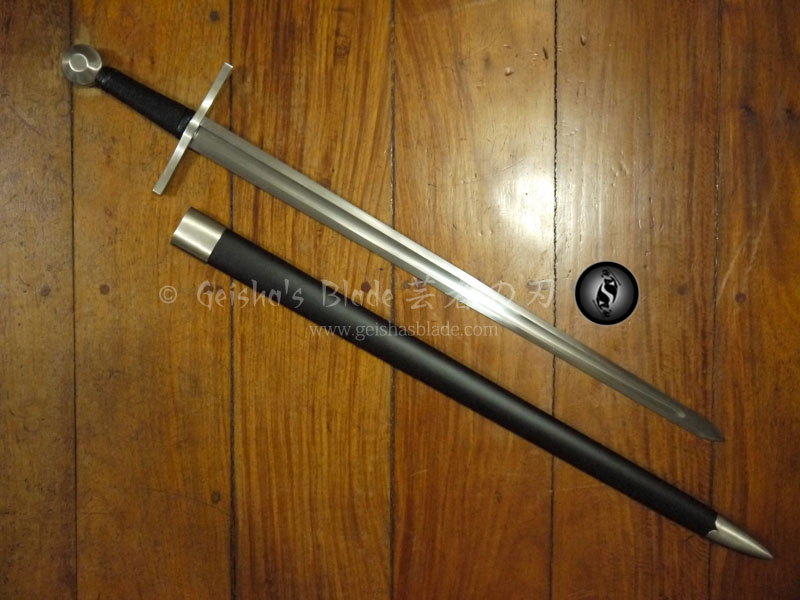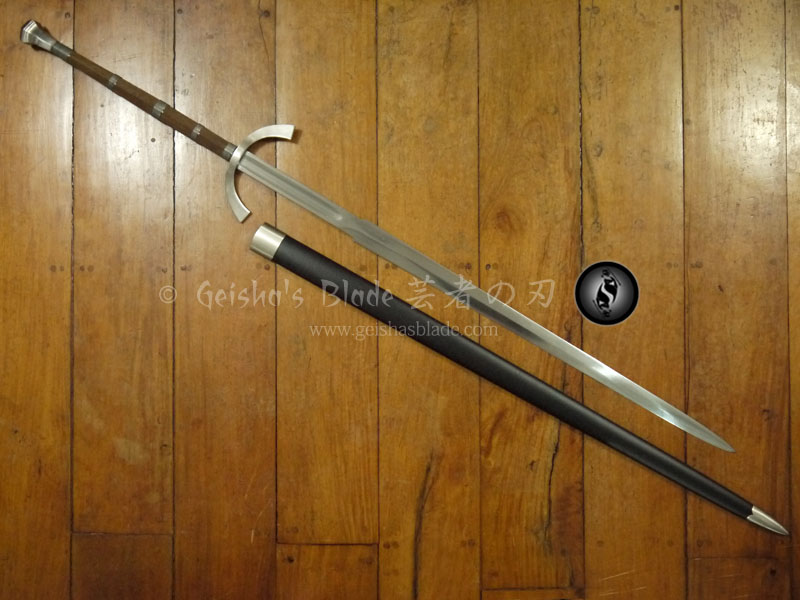A lot of our customers have been asking when we’ll be restocking our high end swords? They’ll be back very soon, and with a revamp!
Here are some preview photos of some of the new high end swords we’re expecting to arrive hopefully by June 2023. The sword on top has a mono-steel blade polished in Sashikomi style, with suguha (straight) hamon pattern, red copper habaki and seppa, and iron tsuba. Even though it’s not folded, you can see the hada (grain) in the jigane (surface steel) due to the skill of the polisher and method of polishing done on the blade.
With nihonto (swords made in Japan), swords are polished in either Kesho (hadori) or Sashikomi style.
Kesho style is the modern style of blade polishing. In Japan, they say that Kesho finish is like make up on a woman (kesho means cosmetic), because the hamon can be made to look more uniform, thus hiding some details and does not follow the true hamon closely. With Kesho, the blade is “black shining”, while the hamon is very white. This polishing style was developed by a famous polisher in the early 20th century.
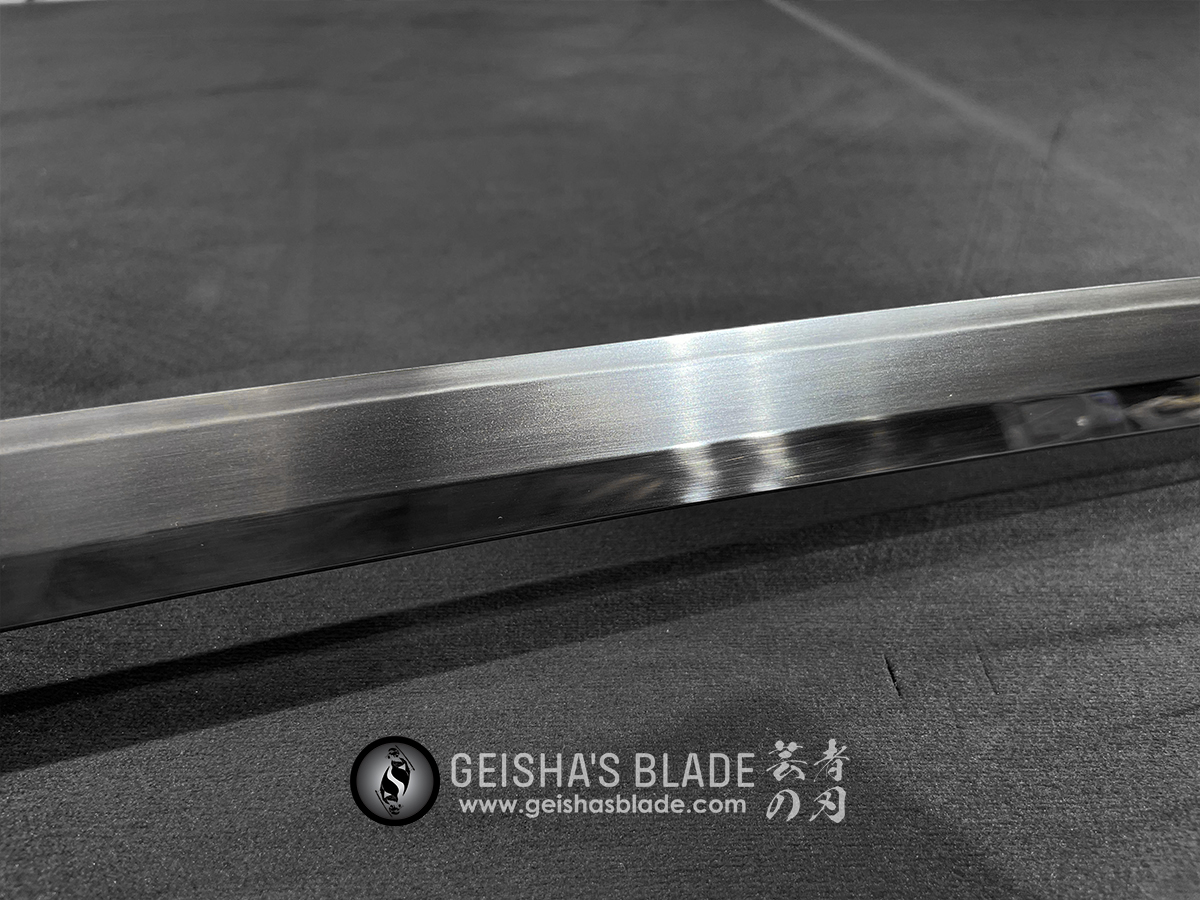
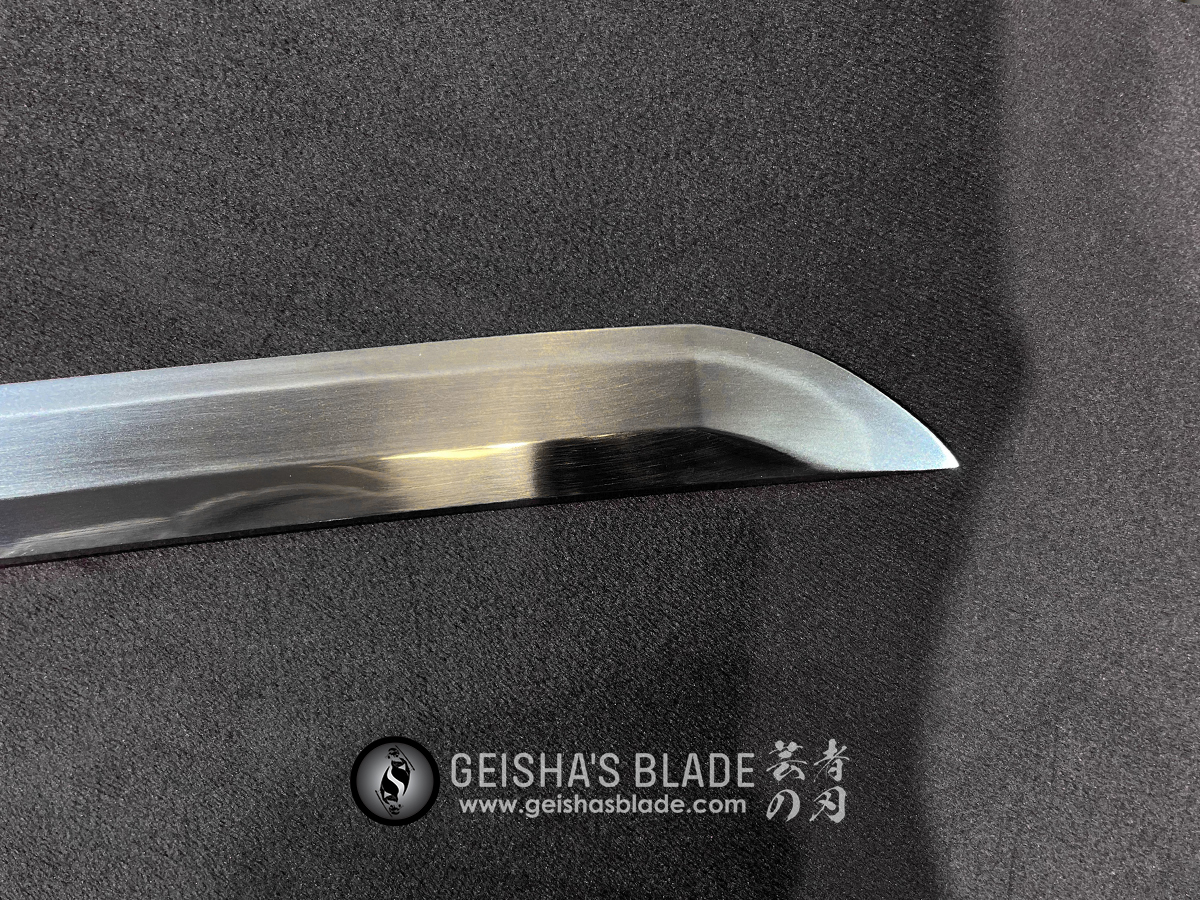
Sashikomi style is the classical style of blade polishing. The hamon is left natural and the blade is not shining like the modern style of polishing, but all the appearances of the steel come up. Sashikomi is a little more difficult to do than a Kesho finish.
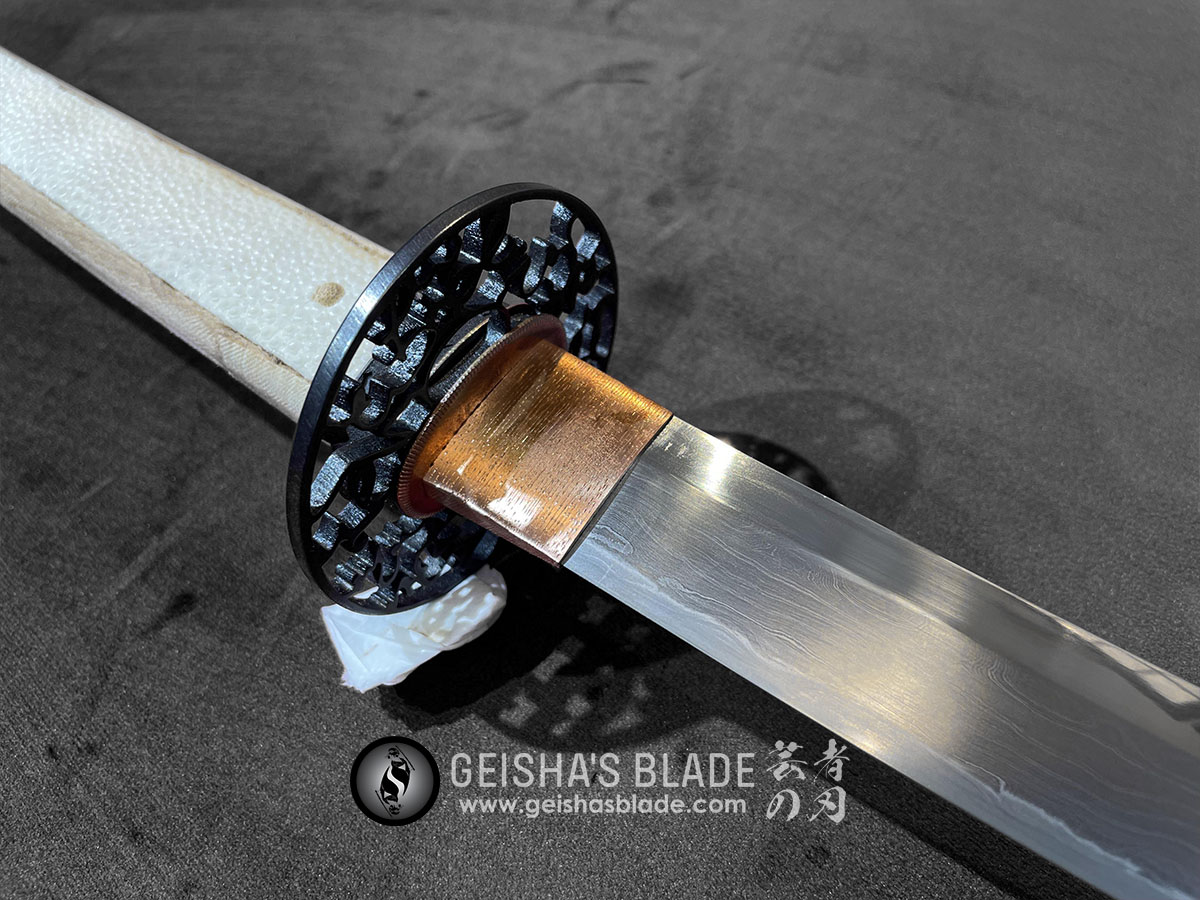
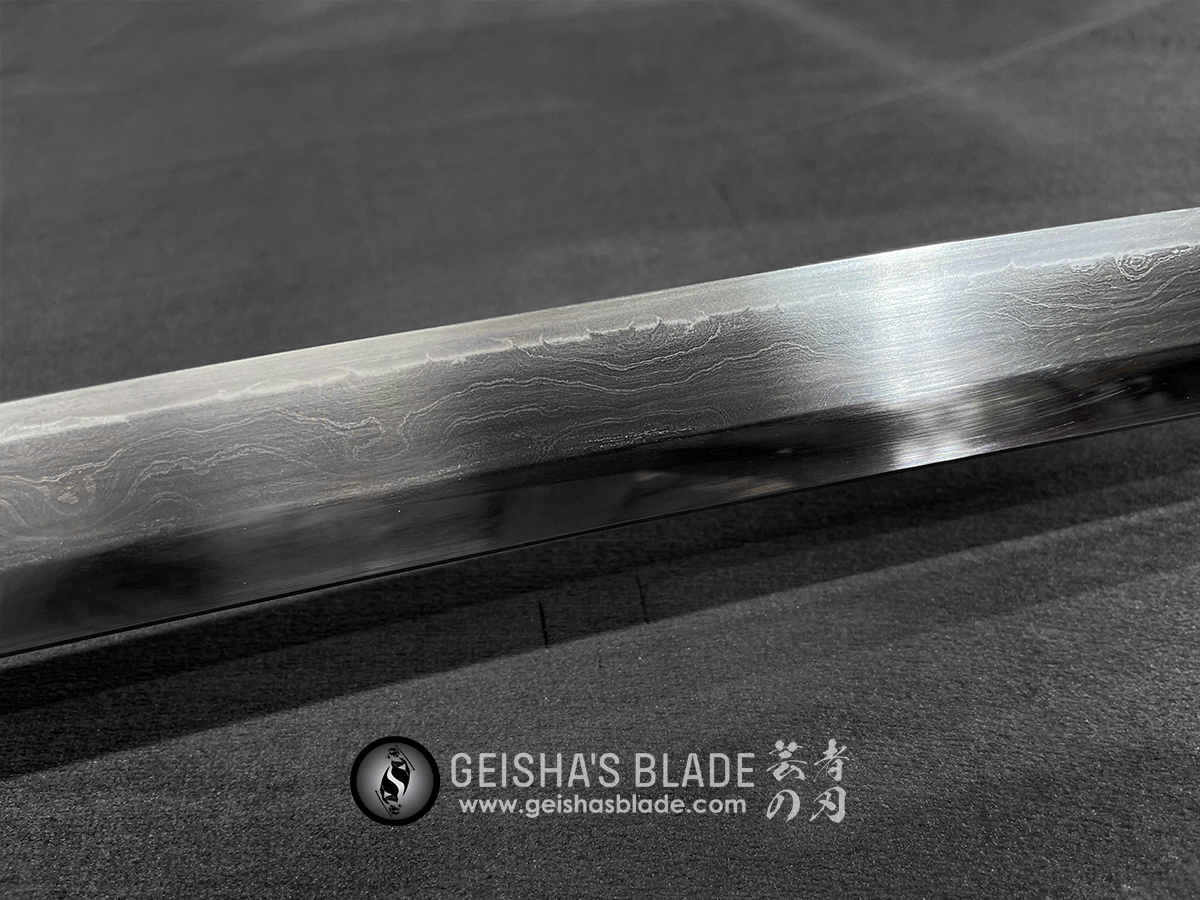
With regards to our revamped high-end swords, we will be offering them with fittings (tsuba, fuchi-kashira, menuki) not commonly seen on modern production swords. They will also have silk tsukaito and sageo imported from Japan. The tsuka will be wrapped with hishigami (paper triangles under the tsukaito) that make the wrap tighter and more uniform).
What about the blade? What type of steel will they be made of? Is it 1095 or T10?
We won’t be using 1095 or T10 for these new swords. We’ll be using oroshigane.
What is oroshigane? Is that tamahagane?
No, it’s not tamahagane. For us, the word tamahagane should only be used if it came from the tatara furnace in Japan. Otherwise, it’s just a marketing hype.
Oroshigane is a steel produced and/or refined by the swordsmiths themselves, which can be steel from old nails, old iron gates, old swords, etc.
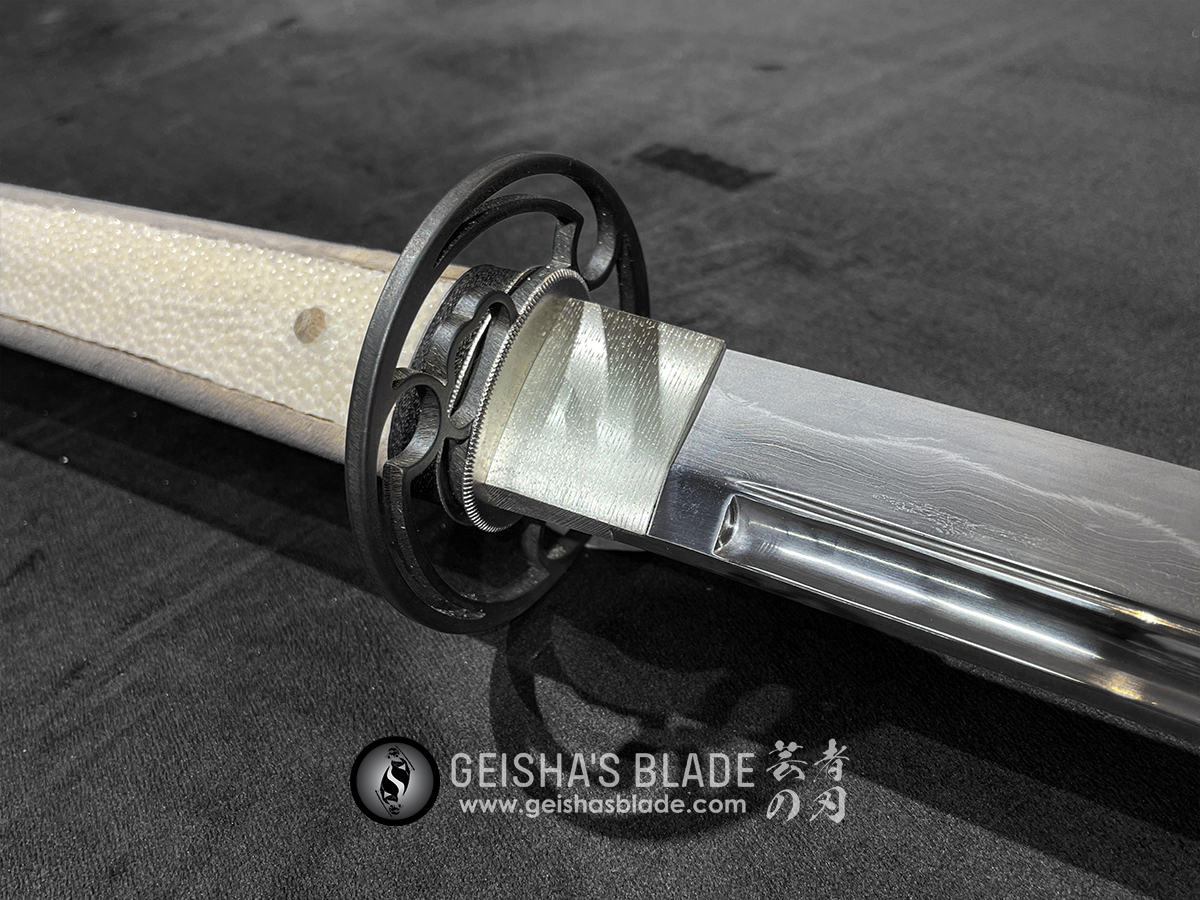

In Japan today, several modern swordsmiths go into great lengths (even combined with academic research on iron and steel) produce their own steel, and proudly mention that in their signatures. Swordsmiths using oroshigane is not a modern practice. In fact, in earlier Koto period (Koto times from the years 800 – 1600), the process of oroshigane was the norm.
The higher-end swords we’ll be offering for now will be made of mono-steel with a Rockwell hardness of 56-57 HRC, and folded steel with a Rockwell hardness of 58 HRC. As for the carbon content, unfortunately our forge doesn’t have the exact data yet. For the mono-steel blade, even though it’s not folded, you can see the hada (grain) in the jigane (surface steel) due to the method of polishing done on the blade.
These new swords are way above the quality we’ve had before, and from swords other sellers are selling in the country. As far as we know, we will be the first to ever offer swords of this caliber in the Philippines.
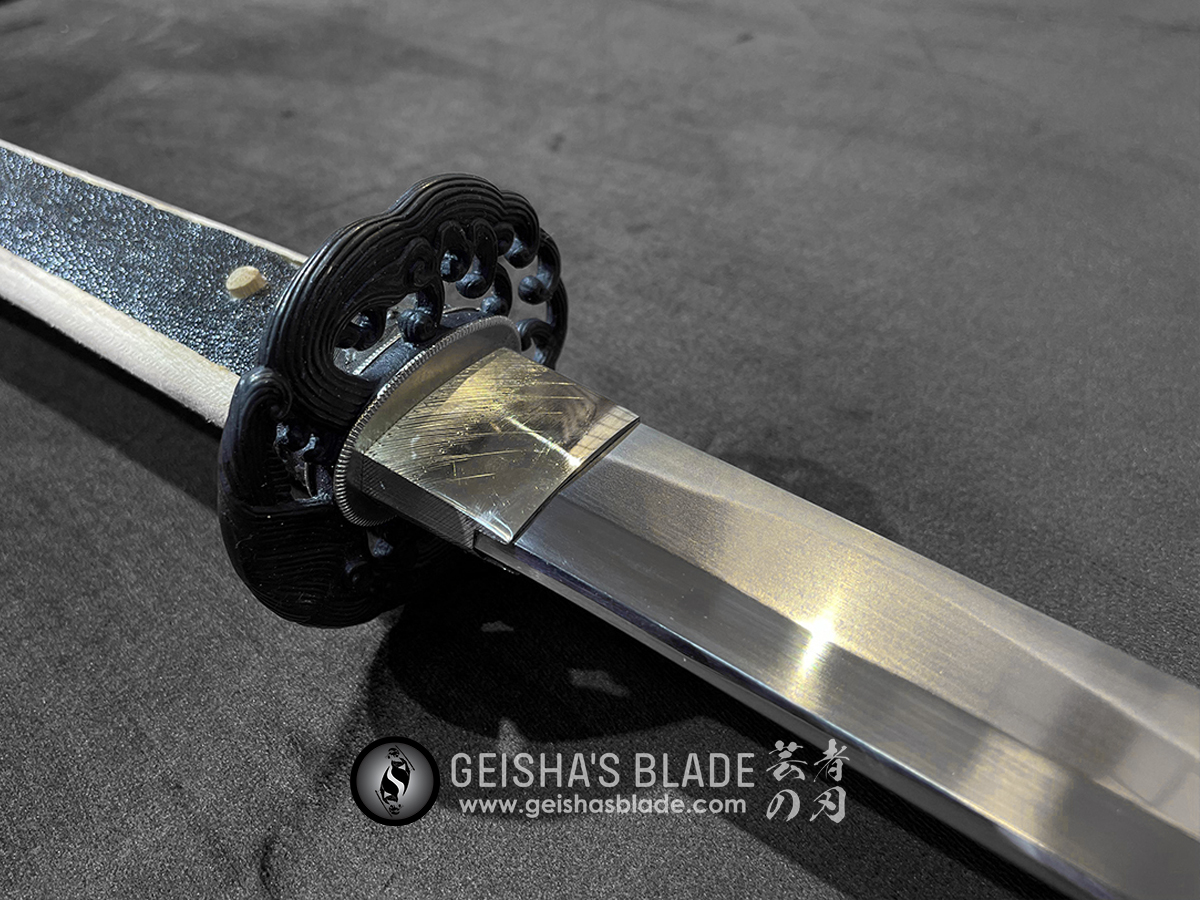
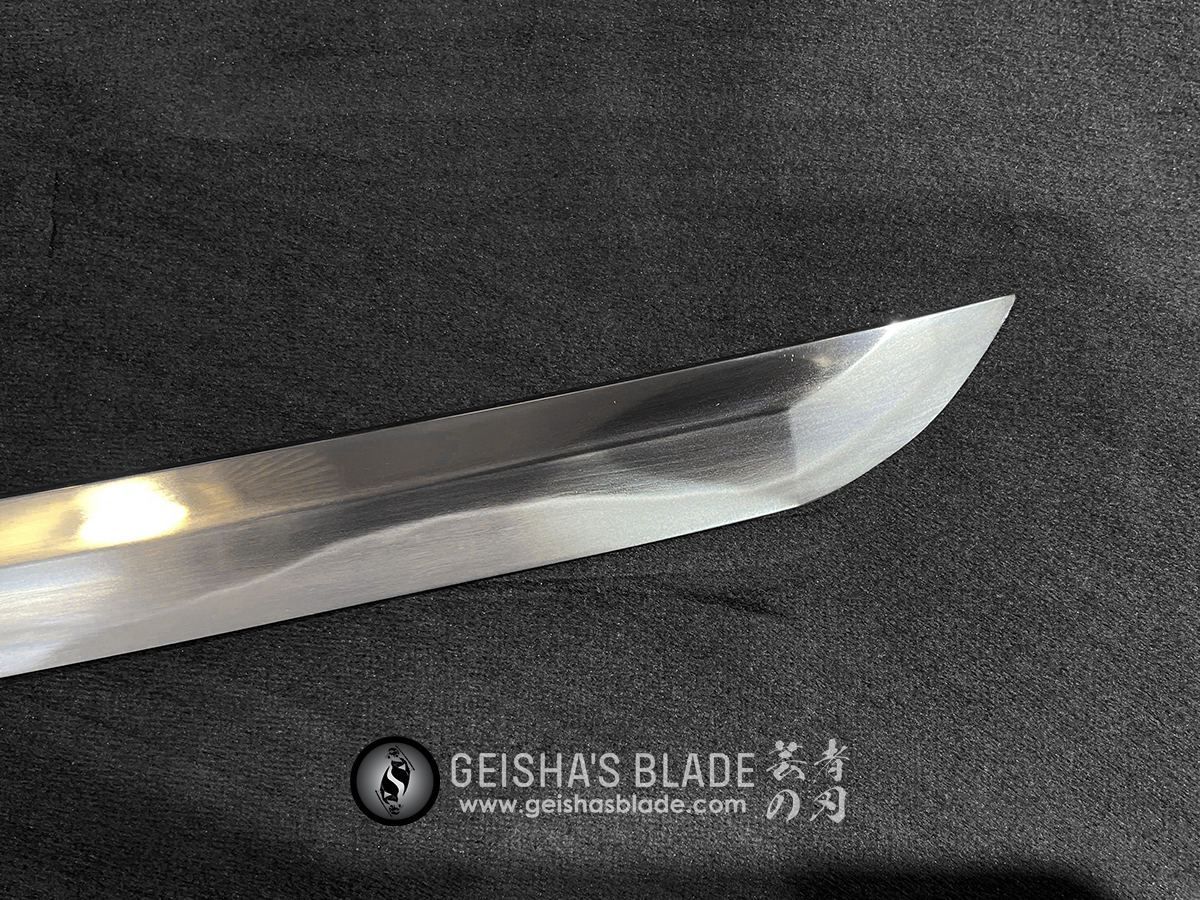
With all these improvements we’ve made, the price will be much higher than our previous high end swords. We’ll announce the price when they’ve already arrived. We guarantee you, though, that the price is so worth it. It is justified with the quality of these swords. We’ll only be having 7 designs in this batch; the folded steel version will have the same design as the mono-steel version.
These teaser photos are just the tip of the iceberg. We cannot wait to post more preview photos once production is finished. So start saving now!

